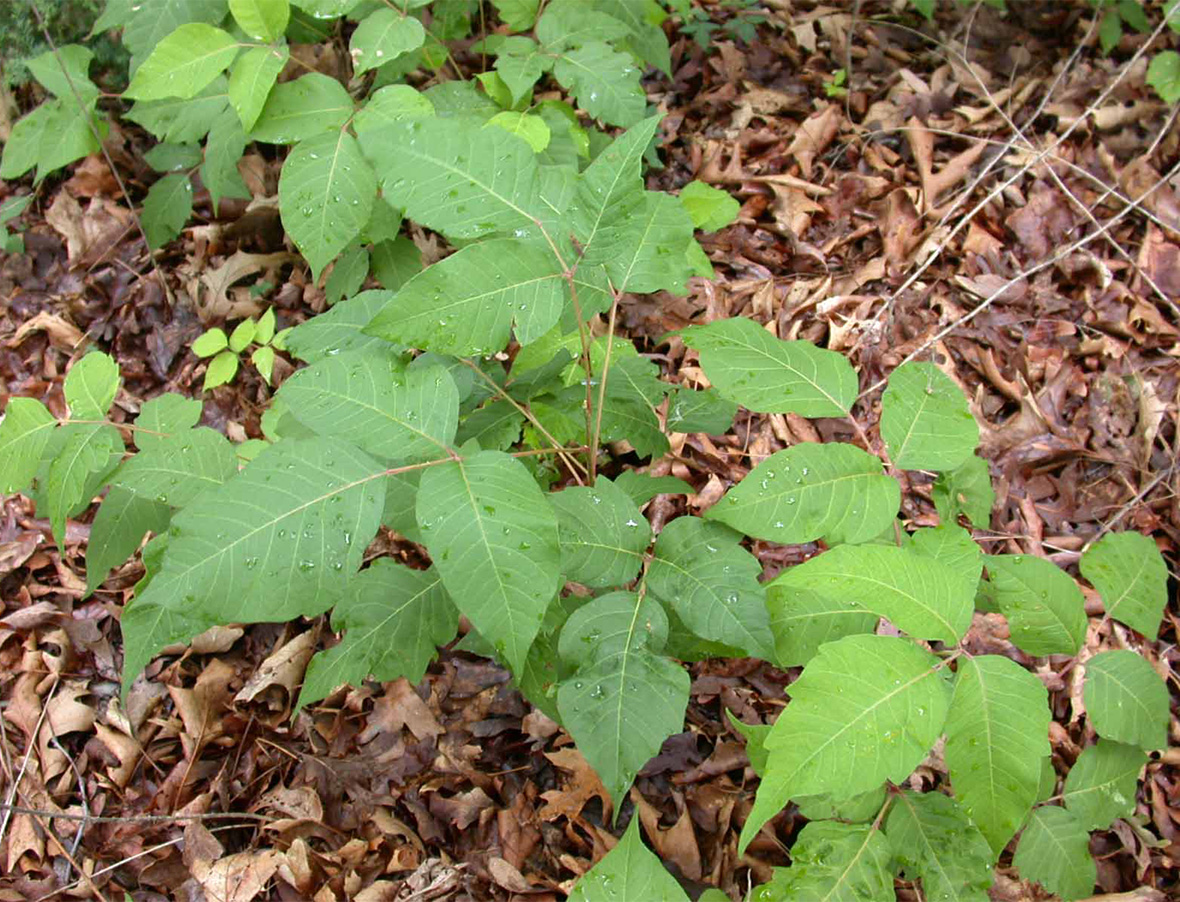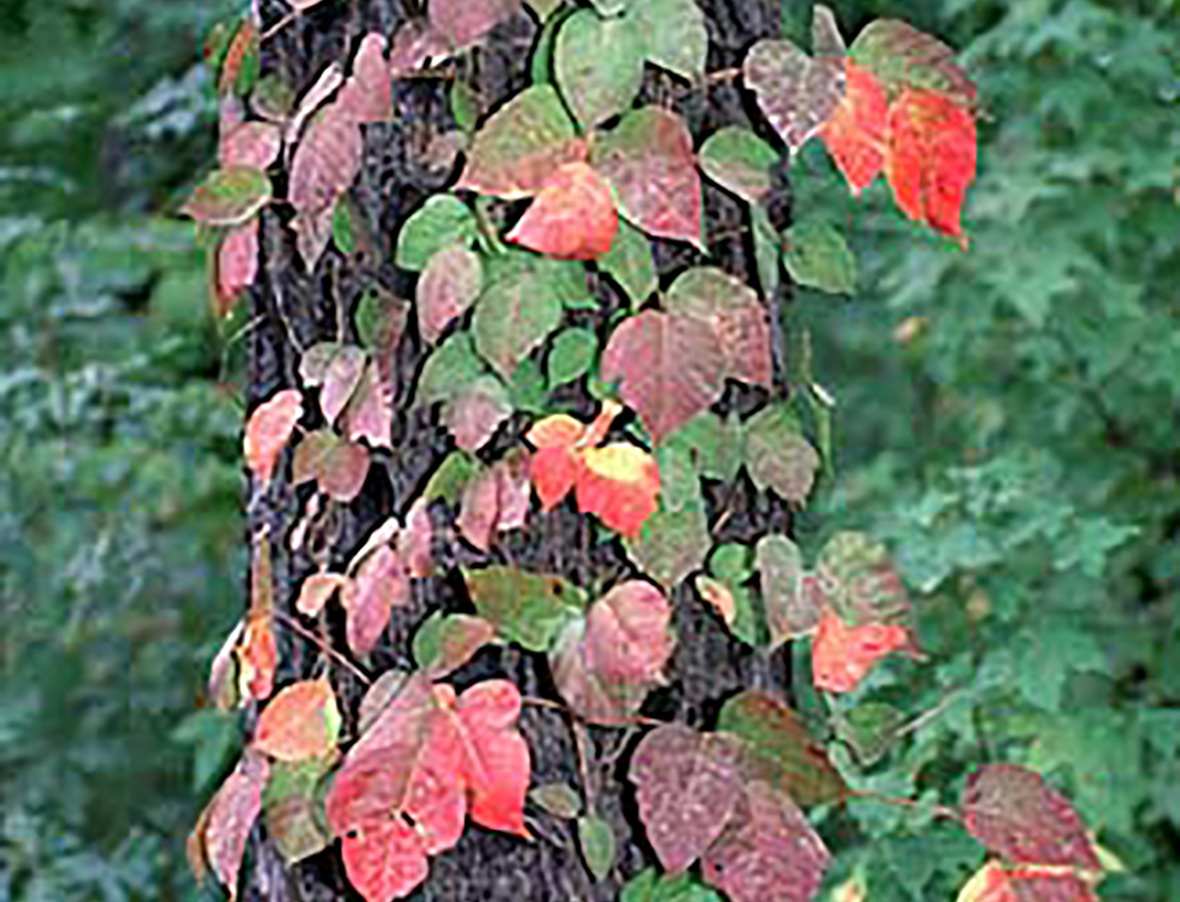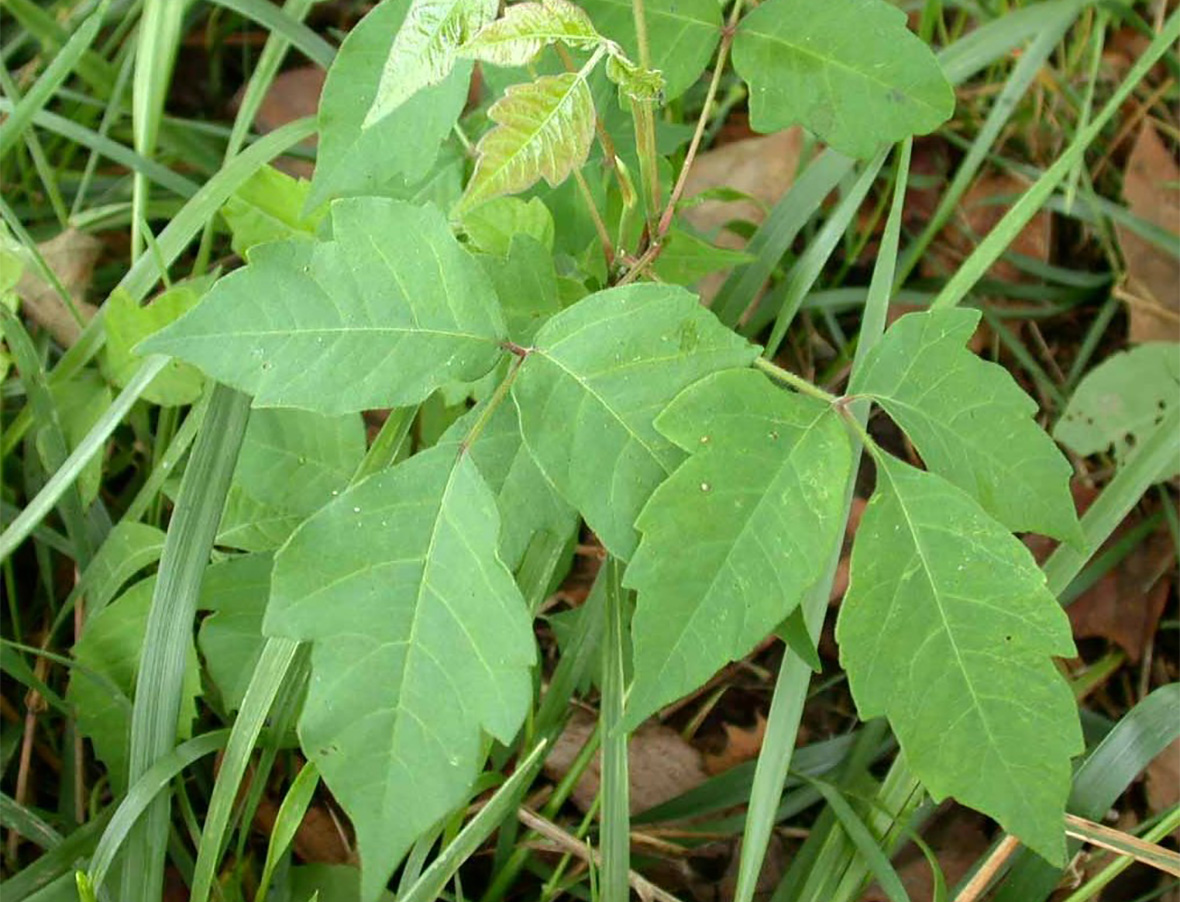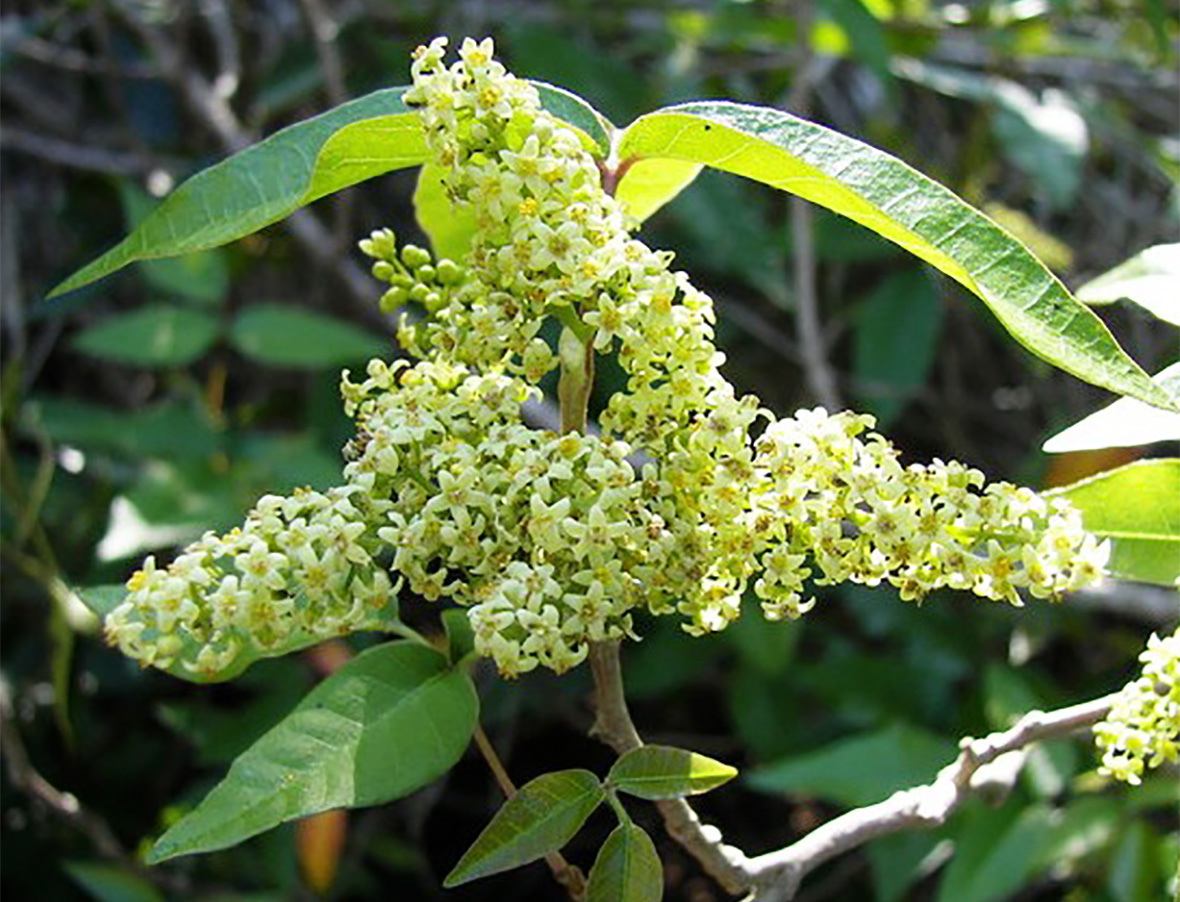Description
Poison ivy can be an erect woody shrub or a climbing vine. The leaves alternate on red stems. They are glossy and have 3 leaflets 2- to 3-inches long that can be smooth or toothed; leaves turn red in the autumn. As with other members of the Rhus family (poison oak and poison sumac), poison ivy can cause severe skin irritation. The yellowish flowers of poison ivy form in clusters in the axis. The flowers have five green petals and are usually inconspicuous. Poison ivy forms a small creamy white berry in the fall containing a single seed. Berries generally remain attached to the stem through the winter. Poison ivy spreads by rhizomes and seeds and prefers shaded areas. Poison ivy has a fibrous root system. Poison ivy is found throughout the midwestern, northern and eastern United States.
Weed Photos: Courtesy of Dr. Lambert McCarty. Clemson University. Clemson, SC.
Herbicide Use
Large, well-established poison ivy infestations can be a problem to remove either mechanically or chemically. A series of post-emergence broadleaf herbicide foliar treatments may be required to conquer a large poison ivy infestation. Poison ivy vines which have become well-established in trees can be practically impossible to eradicate without herbicide damage to the tree. In these situations an ester herbicide labeled for mixing with oil for a basal stem treatment may be required. For optimum foliar control, make your herbicide application to poison ivy that is actively growing and in the first trifoliate leaf to flower stage of growth.
Distribution
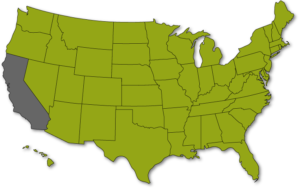


Germination Dates
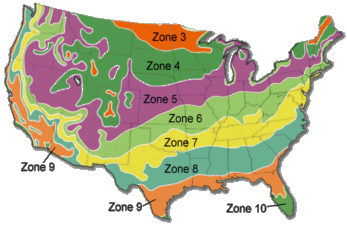


Recommendations
PowerZone® Broadleaf Herbicide
Q4® Plus Turf Herbicide for Grassy & Broadleaf Weeds
SpeedZone® Broadleaf Herbicide for Turf
SpeedZone® Southern Broadleaf Herbicide for Turf
SpeedZone® Southern EW Broadleaf Herbicide for Turf
Super Trimec® Broadleaf Herbicide
Surge® Broadleaf Herbicide for Turf
Trimec® 1000 Low Odor Broadleaf Herbicide
Trimec® 992 Broadleaf Herbicide
Trimec® Bentgrass Formula Broadleaf Herbicide
Trimec® Classic Broadleaf Herbicide
Trimec® Encore® Broadleaf Herbicide
Trimec® Southern Broadleaf Herbicide for Sensitive Southern Grasses
TZone SE Broadleaf Herbicide for Tough Weeds




